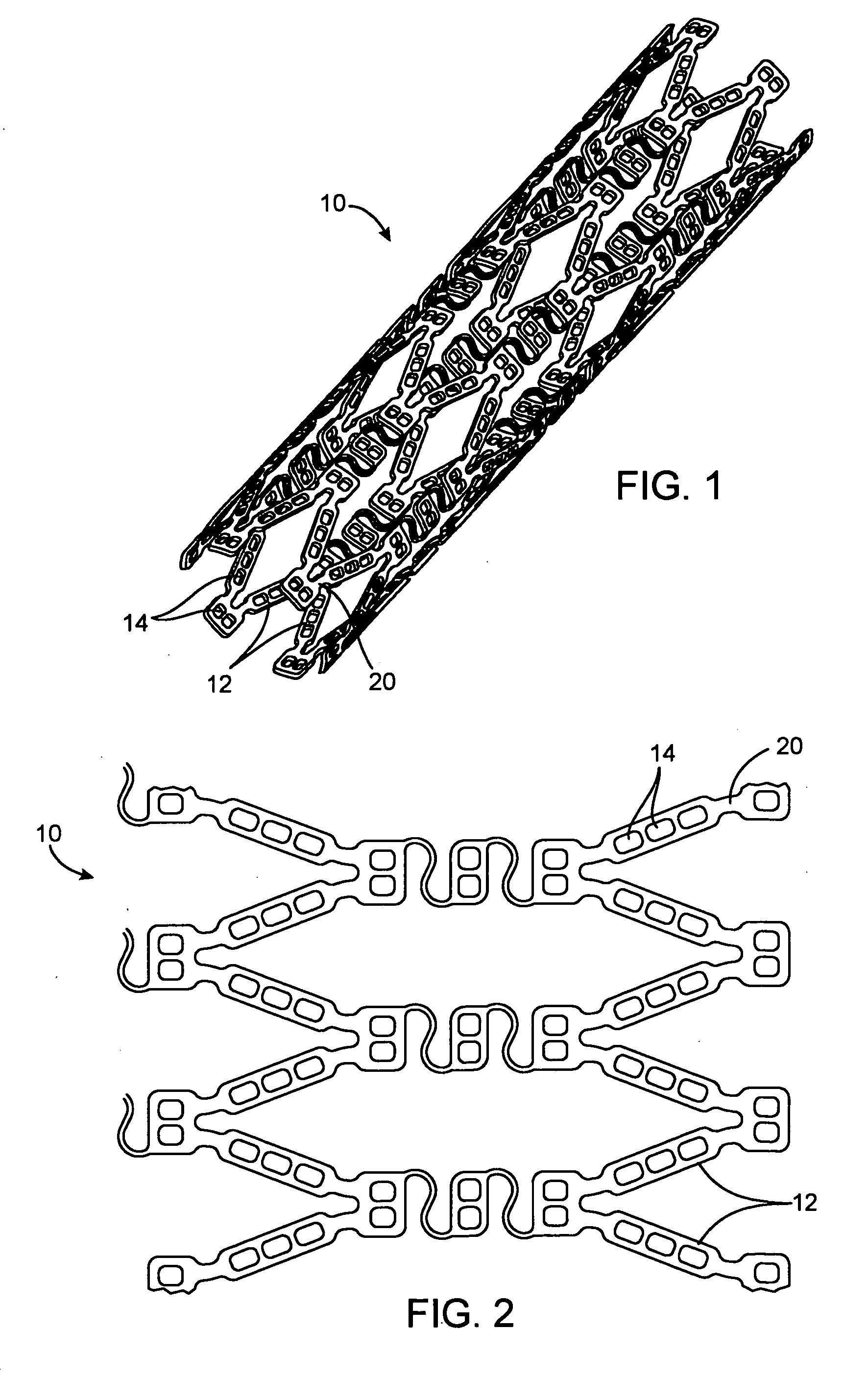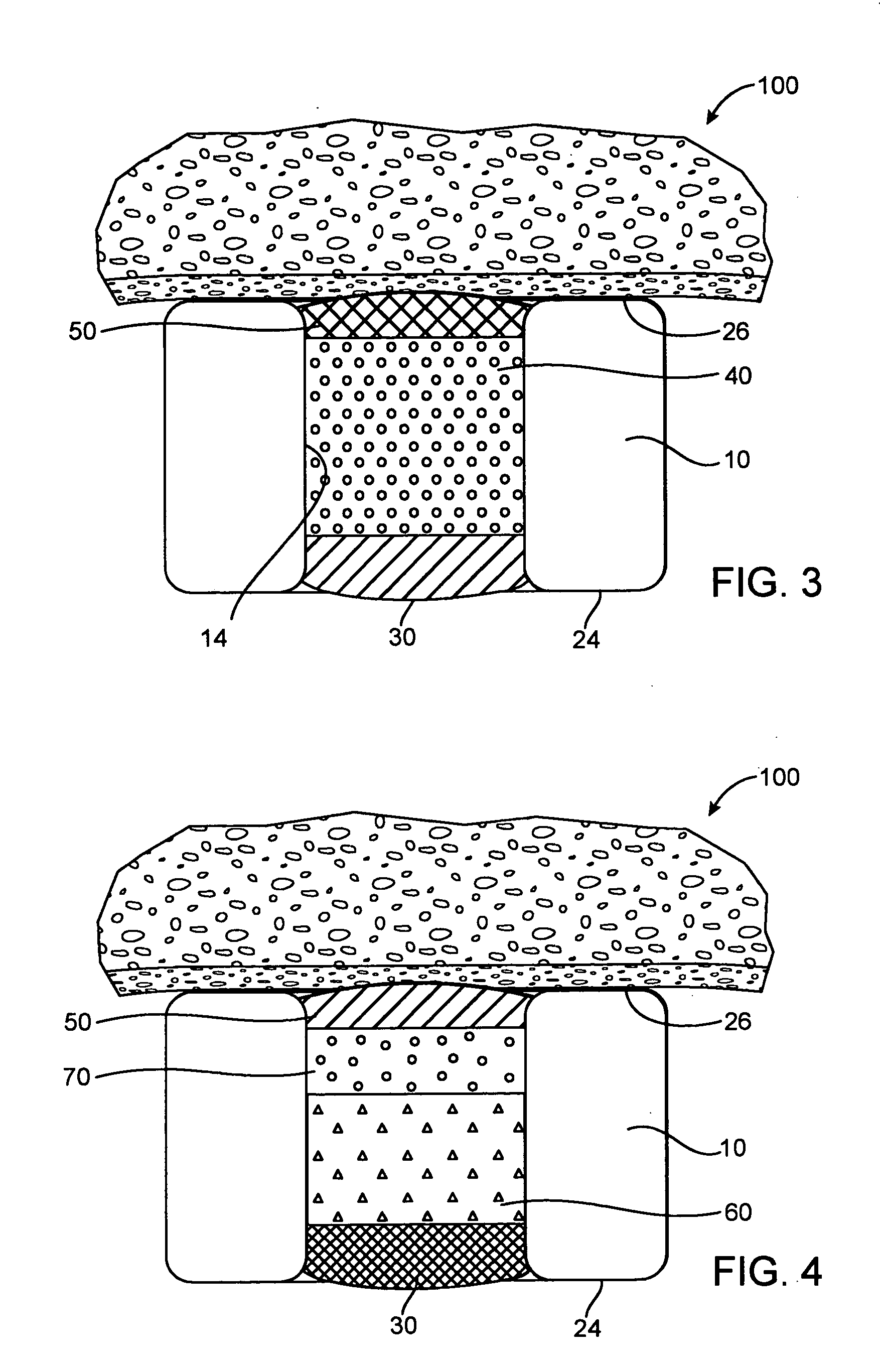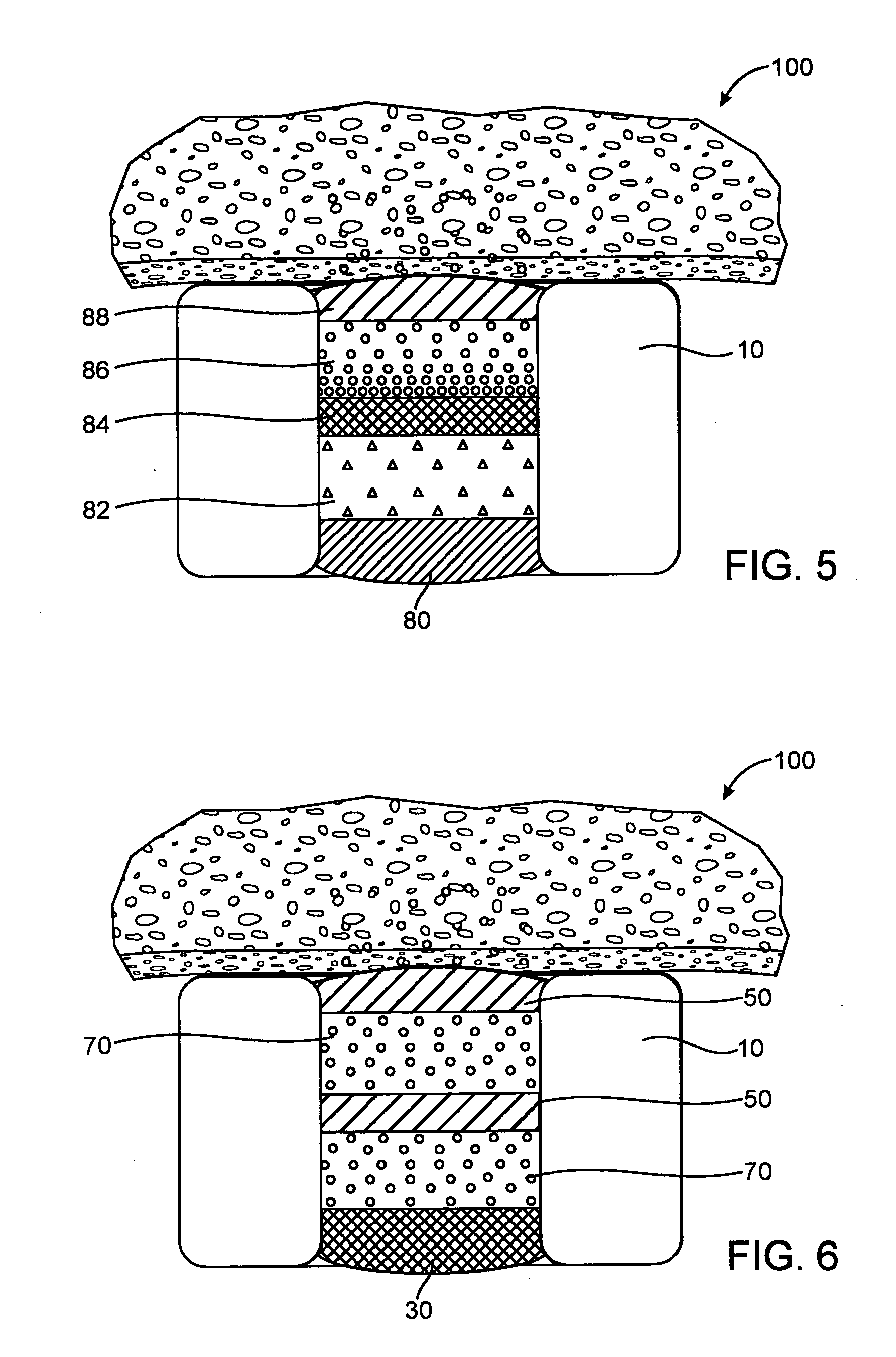Expandable medical device with beneficial agent matrix formed by a multi solvent system
a multi-solvent system and expandable technology, applied in the field of expandable medical devices, can solve the problems of increasing trauma and risk to patients, restenosis is a major complication, and known surface coatings, which can provide little actual control over the release kinetics of therapeutic agents
- Summary
- Abstract
- Description
- Claims
- Application Information
AI Technical Summary
Benefits of technology
Problems solved by technology
Method used
Image
Examples
example 1
Preparation of Stents Containing Insulin
[0071] Stents of the general configuration illustrated in FIG. 1 were mounted on a mandrel and individual holes were filled with and without the multiple solvent system to show the reduction in burst achievable using the dual solvent system.
Fast Release—Soluble Base Layer
[0072] In the fast release example, a base layer was formed by multiple steps of filling with a solution of 5% poly(lactide-co-glycolide) (PLGA) in anisole, the solution was dried between filling steps. A drug layer was then formed in multiple steps of filling with a solution of 10% insulin, 10% poly(vinylpyrrolidone)(PVP) in DMSO, the solution was dried between filling steps. Since PLGA is soluble in DMSO, the DMSO will partially dissolve the PLGA. A cap layer was then formed in multiple steps of filling with a solution of 5% poly(lactide-co-caprolactone)(PLA-PCL) in anisole with the solution dried between filling steps. The PVP is not soluble in anisole and thus, the cap...
example 2
Preparation of Stent Containing dA
[0076] Stents of the general configuration illustrated in FIG. 1 were mounted on a mandrel and individual holes were filled with and without the multiple solvent system to show the reduction in burst achievable using the dual solvent system. The deoxyadenosine (dA) used in these formulations is used as a surrogate for 2-CdA and provides results which are comparable with 2-CdA.
Fast Release—Soluble Base Layer
[0077] In the fast release example, a base layer was formed by multiple steps of filling with a solution of 4% poly(lactide-co-glycolide) (PLGA) in dimethyl sulfoxide (DMSO), the solution was dried between filling steps. A drug layer was then formed in multiple steps of filling with a solution of 22.5% dA, 7.5% poly(vinylpyrrolidone)(PVP) in DMSO, the solution was dried between filling steps. Since PLGA is soluble in DMSO, the DMSO will partially dissolve the PLGA. A cap layer was then formed in multiple steps of filling with a solution of 5% ...
PUM
| Property | Measurement | Unit |
|---|---|---|
| volume | aaaaa | aaaaa |
| thickness | aaaaa | aaaaa |
| thickness | aaaaa | aaaaa |
Abstract
Description
Claims
Application Information
 Login to View More
Login to View More - R&D
- Intellectual Property
- Life Sciences
- Materials
- Tech Scout
- Unparalleled Data Quality
- Higher Quality Content
- 60% Fewer Hallucinations
Browse by: Latest US Patents, China's latest patents, Technical Efficacy Thesaurus, Application Domain, Technology Topic, Popular Technical Reports.
© 2025 PatSnap. All rights reserved.Legal|Privacy policy|Modern Slavery Act Transparency Statement|Sitemap|About US| Contact US: help@patsnap.com



